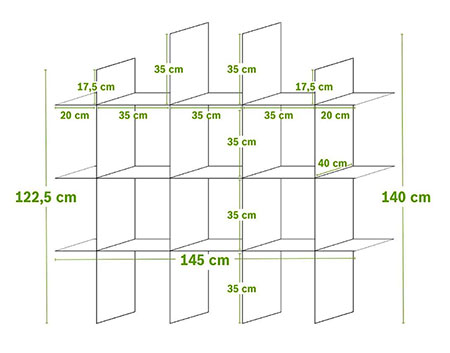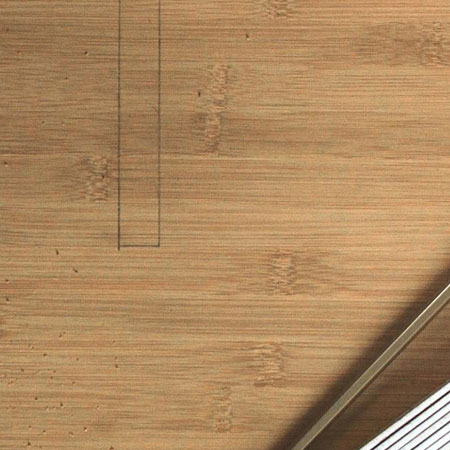Make a Modular Shelf Unit for a Children's Bedroom
Children's bedrooms always need storage furniture and this modular shelf unit is great for both storage and display, plus it's easy to make.
07/06/2020
This shelf unit is a great addition to a children's bedroom. It offers storage and display shelves and you can add boxes or baskets to hold toys neatly out of sight. The shelf unit is easy enough to make and consists of several cross-lap joints cut in the boards to allow for easy assembly without any screws or glue. Cross-lap joints are a woodworking method of joining pieces together without the need for nails, screws or glue.
Make the shelf unit using bamboo, veneered plywood or pine and apply a couple of coats of clear acrylic or polyurethane sealer to protect it and make it easy to keep clean.
YOU WILL NEED:
Bamboo, veneer plywood or pine boards, cut to the following sizes:
- 2 of 20 x 400 x 1225mm
- 2 of 20 x 400 x 1400mm
- 3 of 20 x 400 x 1450mm
3mm Masonite or hardboard backing board, cut to fit
25mm screws
120- and 180-grit sandpaper
TOOLS:
Drill / Driver or Cordless Screwdriver plus assorted bits
Jigsaw and clean-cut jigsaw blade
G-clamps
Ruler
Tape measure and pencil
Rubber mallet
Safety gear
HERE'S HOW:
1. Use a pencil and rulers to mark out the cross-laps on the boards according to the diagram above. The cross-lap joints let you join the boards together so that the boards perfectly overlap each other.
2. Pop on your safety gear before using your jigsaw to cut out the slots for the cross laps. It's easier to do this by first sawing vertically along both long lines and then removing the small piece that remains.
3. Sand the rough edges with 120-grit sandpaper before smoothing with 180-grit sandpaper. Wipe clean once you are done.
4. Have someone to help you with this step. With the bottom board ready and waiting, take the horizontal boards and slot these into the bottom board, making sure that all the boards are facing in the right direction. You don't want to put the shelf unit together the wrong way.
5. Once the bottom board holds the horizontal boards in place, you can add the remaining boards.
GOOD TO KNOW: If the joints are a tight fit, you may need to use a rubber mallet to tap the boards firmly together.
6. Now you can measure, cut and secure the backing panels where you want them. It is best to cut these after assembly to allow for any inconsistencies and ensure a perfect fit.
all about diy







